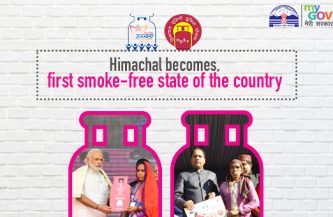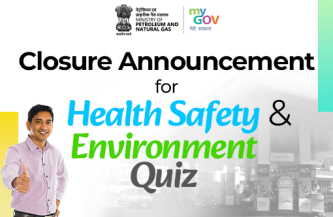A human touch to India’s mineral ecosystem

In the year 2014, the higher judiciary turned the spotlight on the allotment of coal blocks with the Comptroller and Auditor General of India’s report of 2012 focusing on the allocation of coal blocks between 2004 and 2009.
In 2015, the Narendra Modi government amended the Mines and Minerals (Development and Regulation) Act mandating auctions. As a part of the Bill, the government created a new body in the form of a District Mineral Foundation (DMF) where licensees and leaseholders pay the DMF a certain amount of the royalty. This was driven by the Prime Minister’s firm belief that local communities are the key stakeholders in the nation’s natural resource-led development.
A transformation
Today, ten years later, the DMF has received a corpus of almost ₹1 lakh crore through which decentralised community-centric development works are carried out in mining affected districts. The journey from huge losses in crores to the national exchequer to an almost ₹1 lakh crore corpus in the DMF is a transformation worth narrating. September 16 is District Mineral Foundation Day as the Pradhan Mantri Khanij Kshetra Kalyan Yojana (PMKKKY) scheme enters its tenth year. Today, the DMFs have resulted in three lakh projects being sanctioned across 645 districts in 23 States, transforming mineral wealth into a lifeline for development in mining affected regions. The objective in the PMKKKY is to implement developmental and welfare projects/programmes in mining affected areas alongside existing schemes/projects of State and central governments; minimising the impacts of mining on the people in mining districts and ensuring that those affected have long-term sustainable livelihoods.
At a recent DMF Gallery launch in New Delhi, I had the privilege of meeting some talented women from self-help groups set up by DMFs in Odisha. These women were not just artisans but were also entrepreneurs in the making. In Katni, Madhya Pradesh, DMFs are helping young minds master drone technology. Many have landed jobs and others are gearing up for new opportunities.
In India’s rapidly evolving mining landscape, where we have just launched the National Critical Minerals Mission to secure our footing in strategic and critical minerals and are expanding our global footprint through our international public sector unit, Khanij Bidesh India Ltd. (KABIL), DMFs complement this goal through the welfare of the local communities in mining areas. DMFs institutionalise this strategy by making State governments active partners and stand as a veritable picture of the philosophy of ‘Sabka Saath Sabka Vikas Sabka Vishwas Sabka Prayas’.
With a District Collector at the helm, funds flow to where the needs are greatest. The ‘National DMF Portal’ digitises the administration and the oversight of DMFs across India, enabling greater transparency and efficiency in operations. DMFs are not only spearheading national priorities but also supplementing efforts of the district administration in improving the socio-economic and human development indicators of the region.
Innovation at every DMF
It is also interesting to note how every DMF is innovating to maximise the impact of the initiatives and devising strategies to address unique challenges and needs. For instance, some DMFs are ensuring inclusivity by including elected representatives in the governing bodies while some have non-elected members of gram sabhas as well. Some DMFs have also adopted measures such as establishing a dedicated engineering department and deputing personnel from the State Public Works Department to ensure the efficient implementation of projects.
Ensuring a well-planned outlook, DMFs are also chalking out a three-year-plan to ensure targeted goal achievement. After studying these various models, our aim now is to ensure that such best practices are standardised across all DMFs without taking away the local context and knowledge that resides within the district. These efforts will ensure that DMFs take up long-term and well-planned projects while avoiding the earlier fragmented approach.
To further integrate DMFs operations, we are encouraging district administrations to dovetail the activities and goals of the DMFs with ongoing central and State schemes in aspirational districts and supplement efforts towards achieving the Sustainable Development Goals. We are also aiming to use DMFs to augment the livelihood of forest dwellers by taking up projects in the plantation, collection and processing of medicinal herbs. The DMFs will also identify and nurture rural athletes while developing sports infrastructure and facilities. DMFs, in short, can be seen as microcosms of the government’s ‘whole of government’ approach, and will continue to be leveraged to reach out to the impacted communities
Advantage of convergence
The DMFs are a fine example of cooperative federalism and have the unique advantage of converging central and State schemes. Aligning goals and resources at three levels of governance ensures that national priorities meet local needs and amplify the impact and reach. Moving forward with a ‘whole of government’ approach, DMFs are becoming powerful tools for truly inclusive governance, reaching every corner of the nation. By tapping into India’s mineral wealth, these initiatives are transforming historically underserved regions, turning natural resources into drivers of local development. Beyond just empowering marginalised communities, India is reshaping how the world thinks about resource management, setting an example of how nations must balance economic growth with social welfare and rights.
Author: G. Kishan Reddy, Union Minister of Coal and Mines

















